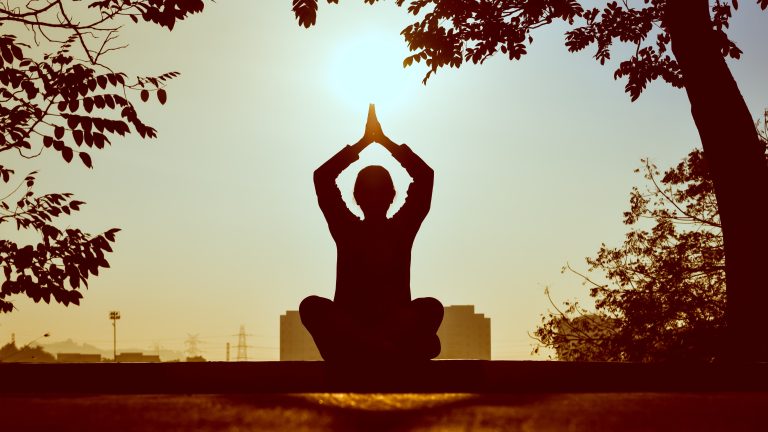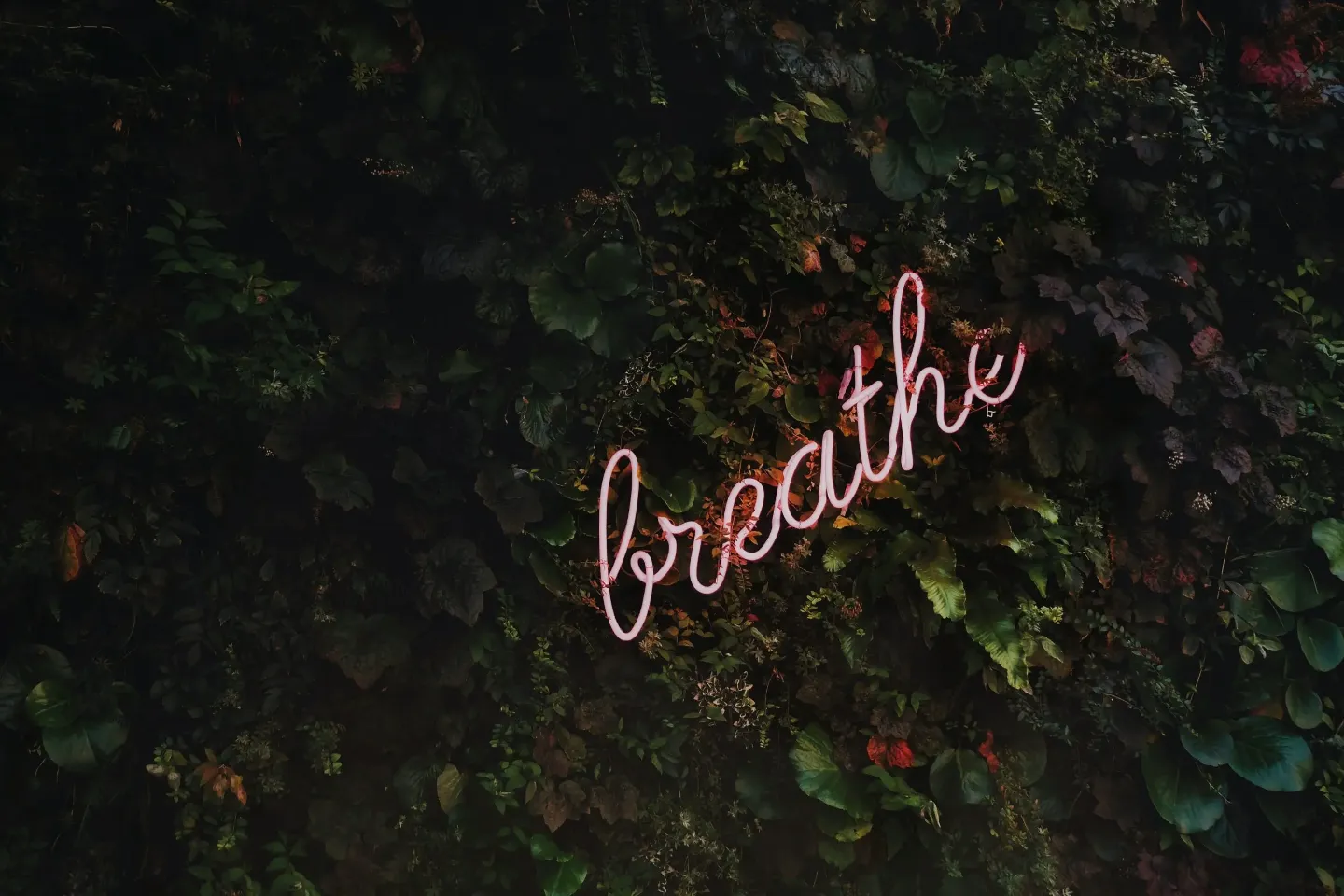What is meditation?
Well, a quick look at Cambridge Dictionary will tell you that “the act of giving your attention to only one thing, either as a religious activity or as a way of becoming calm and relaxed” is meditation. And indeed, meditation is that. But you must know – it’s also much more.
While widespread misconceptions taint meditation to be “thought-controlling”, “only for the old and aged” or simply “a way to run away from problems”, in reality, meditation is quite far from this. Meditation involves not controlling but allowing all thoughts to pass through, is beneficial for both the young and old, and finally, does not imply running away, but instead facing your problems with a smile.
The importance of meditation has grown rapidly in the last few years. Our fast-paced way of life, increasing connectivity, digital overload and the resulting stress – phew! The world has become more demanding than ever! In times like this, we’re reminded of this famous Zen proverb, “You should sit in meditation for twenty minutes every day unless you are busy. Then you should sit for an hour.”
Why Meditate in the first place?
From experienced meditators to beginners, the question of “why meditate” comes to all. So, it’s essential that before we dive into the techniques and how-tos of meditation, we first address the whys.
Plenty of reports and studies have proven how beneficial meditation can be. Not to forget, the more you practice, the more benefits you experience. Let’s take a look at these meditation benefits that are backed by science:
- Reduces Anxiety and Stress
- Helps Control Pain
- Lowers Blood Pressure
- Improves Sleep Quality
- Helps with Addiction Management
- Improves Self-Confidence and Self-Esteem
- More Empathy and Connectivity with others
- Reduces Anger and Increases Happiness
- Improves Productivity and Focus
- Greater Creativity
Download the app today!
Simple Techniques to help you Start with Meditation
There are several techniques, styles and ways to meditate. If you’re a beginner to the practice, all this information might seem confusing and even overwhelming. Worry not, we’re here to help.
Here’s a round-up of eight simple meditation techniques for beginners and those wishing to learn this life-changing practice.
- Concentration / Focus Meditation
As the name suggests, this style of meditation involves focusing on your mind on a single point. It could be repeating a mantra, staring at an object, listening to a gong or counting beads on a mala. Focusing the mind may sound simple in theory, but in actuality may not be so. Finding yourself losing focus? Just come back to your practice and refocus. Starting with a few minutes and slowly building up to longer durations also helps.
- Mindfulness Meditation
Having Buddhist origins, a highly recommended technique is mindfulness meditation for beginners. It involves being fully in the present; not in the past or the future. When practicing this type of meditation, you aim to acknowledge and observe every thought that passes through your mind. You do not have to engage with those thoughts but simply be aware of them, notice patterns (if any) and be in tune with your feelings and body.
Fun fact: this technique can be indulged in at any time – while eating, taking a shower or even on your daily walks!
- Meditation Stories
These are simple, approachable and often referred to as guided visualizations. They typically involve a narrative or script that directs your imagination, leading you into a state of calm and relaxation. Meditation stories may focus on various themes, such as self-care, gratitude, or inner peace and are an excellent option for those who love to read and prefer an engaging and easy way to meditate.
- Breathing Meditation
Breath-focused meditation encourages concentrating by using your breath as a point of focus. It allows you to breathe deeply, focus on the positives and feel more peaceful and calm. It helps to establish a mind-body connection that clears and centers your mind and improves physical well-being. In fact, many even turn to breath awareness meditation for anxiety and stress management.

Meet your Happiness Goals on Happily
Our Relevant Products
Feel Calm
Feel Motivated
Mindful Relationships
Personal Growth
Brtter Sleep
Slowing Down
and many more...
- Guided Meditation
Commonly practiced amongst beginners, guided meditation is for those who like to be led through the process. The “guiding” takes place through verbal instructions, either through an in-person class or a recording. This technique also encourages imagination and manifesting. Guided meditation has recently gained immense popularity with plenty of apps and videos that help you learn how to meditate!
- Sound Bath Meditation
Simple but effective, this meditation type involves listening to calming sounds to promote deep relaxation and relieve stress. These sounds could be singing bowls, gongs, chimes or even stories and are said to have a therapeutic effect on the body, mind, and soul that can help you access deeper states of consciousness and awareness.
- Loving-Kindness Meditation
By using words, images and feelings, this meditation technique helps invoke feelings of love, compassion and kindness – towards yourself and the world. Research has shown that this technique improves social connectedness, reduces isolation and increases positive social emotions.
- Walking Meditation
A technique that may sound pretty straightforward, but believe us – there’s more to it. More than just a stroll in the park, walking meditation involves walking mindfully and with focus. It involves choosing a place (peaceful, quiet), a pace (slow, small steps) and a session length (you may start with 10 minutes). The idea is to take a few steps for a certain amount of time while focusing on the body’s movements, physical sensations and breathing.
While there are plenty of meditative styles and techniques, the abovementioned are great starting points for exploring this practice daily.
While embarking on your meditation journey, it’s also necessary to, first, acknowledge that no technique is right or wrong. And if you’re confused about which one to begin with, you may want to consider a technique that you feel most comfortable with, one that you’re encouraged to practice. Having said that, don’t be afraid to step out of your comfort zone and try different types. There are several other meditation styles to experiment with and learn, such as spiritual, movement or chakra meditation for beginners which focuses on the energy centers in our body. A little trial and error will eventually lead to a technique that’s perfect for you!

Happily Workplace
Enhance employee happiness, propel their life skills and build a culture of happiness and success at your workplace!
Simple Meditation Steps for Beginners
Starting your meditation journey can be intimidating. In the beginning, you may find it tough to follow through and even feel like giving up. But as with any new practice, meditation gets easier with time. Be kind to yourself and remember discipline is everything!
Here are 7 helpful tips on how to start meditation for beginners:
- Pick a time – First and foremost, choose a convenient time to meditate. The perfect time is when you’re most relaxed, calm and least likely to be disturbed.
- Pick a place – Next, choose a place that is quiet, peaceful and serene.
- Get comfortable – Sit in a comfortable position. You can choose to sit on the floor, on a chair or wherever you feel most comfortable. But try to sit straight while keeping your shoulders and neck relaxed.
- Close eyes – Keep your eyes closed and take a few deep breaths. It’ll help to steady the rhythm of your breathing and lead you to a peaceful state of being.
- Smile – An important step. Keep a gentle smile on your face – it helps enhance your meditative experience!
- Focus – Sit mindfully and pay attention to your breath. Remember to breathe naturally – don’t force it! Be fully present in the moment and pay attention to what you hear and feel.
- Gently open your eyes – As you come close to the end of your session, don’t be in a hurry to open your eyes or make sudden body movements. Gradually open your eyes, take in your surroundings, slowly move your body and there you go! You have successfully completed your first-ever meditative session.
Keep in mind that meditation mustn’t be forced. If forced, it’ll begin to feel like a chore. Sure there’ll be days when you may find it difficult to focus. But don’t lose hope. When starting, the best meditation for beginners is, to start with 5 or 10-minute sessions and slowly increase these durations over time. Soon, you’ll notice that you can sit for longer periods or even take multiple “mindful breaks” throughout the day.
The bottom line is daily meditation can do wonders for your health – mentally and physically. Whether you’re wishing to combat stress or looking at exploring your mind on a deeper level, there’s a meditation technique for every want! Carve out some time in your daily schedule and witness how it slowly becomes enjoyable and supportive. So much so that you’ll soon find your day incomplete without it!
Open yourself up to the possibilities, have fun meditating and watch your world change – one session at a time.






